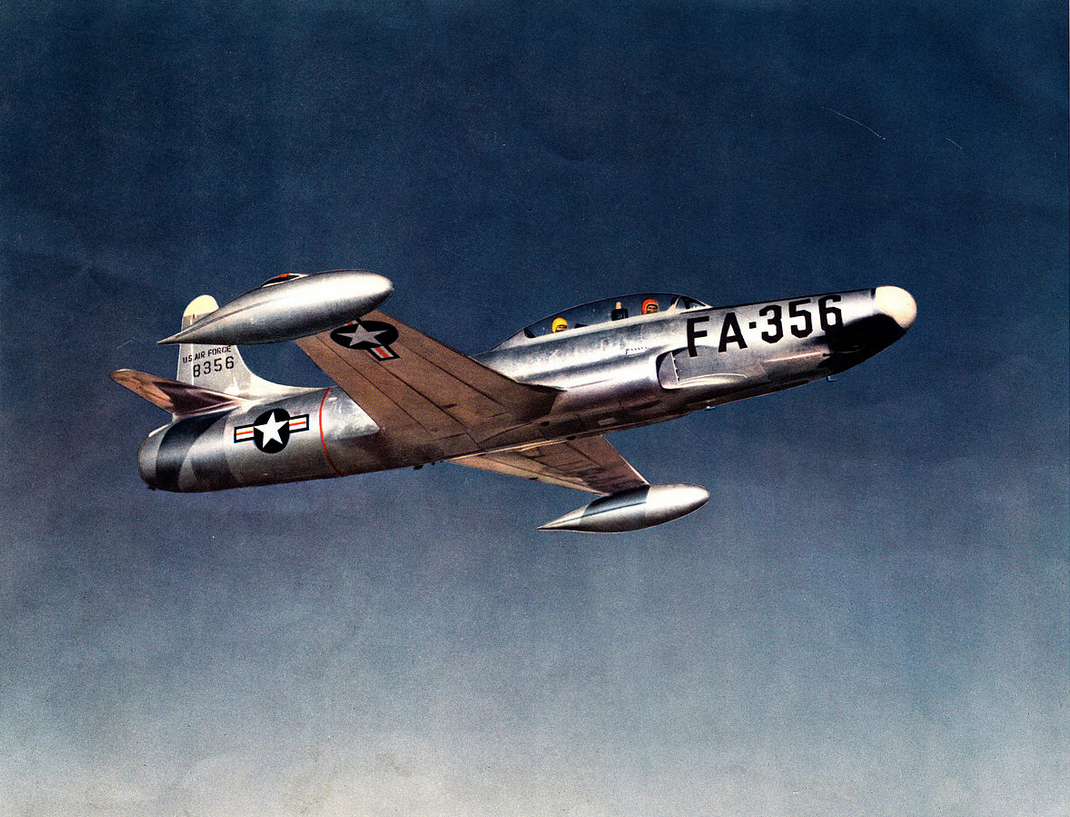
 16 April 1949: At Van Nuys Airport, California, test pilot Tony LeVier and flight test engineer Glenn Fulkerson made the first flight of the Lockheed YF-94 prototype, serial number 48-356. The aircraft was the first jet-powered all-weather interceptor in service with the United States Air Force and was the first production aircraft powered by an afterburning engine.
16 April 1949: At Van Nuys Airport, California, test pilot Tony LeVier and flight test engineer Glenn Fulkerson made the first flight of the Lockheed YF-94 prototype, serial number 48-356. The aircraft was the first jet-powered all-weather interceptor in service with the United States Air Force and was the first production aircraft powered by an afterburning engine.
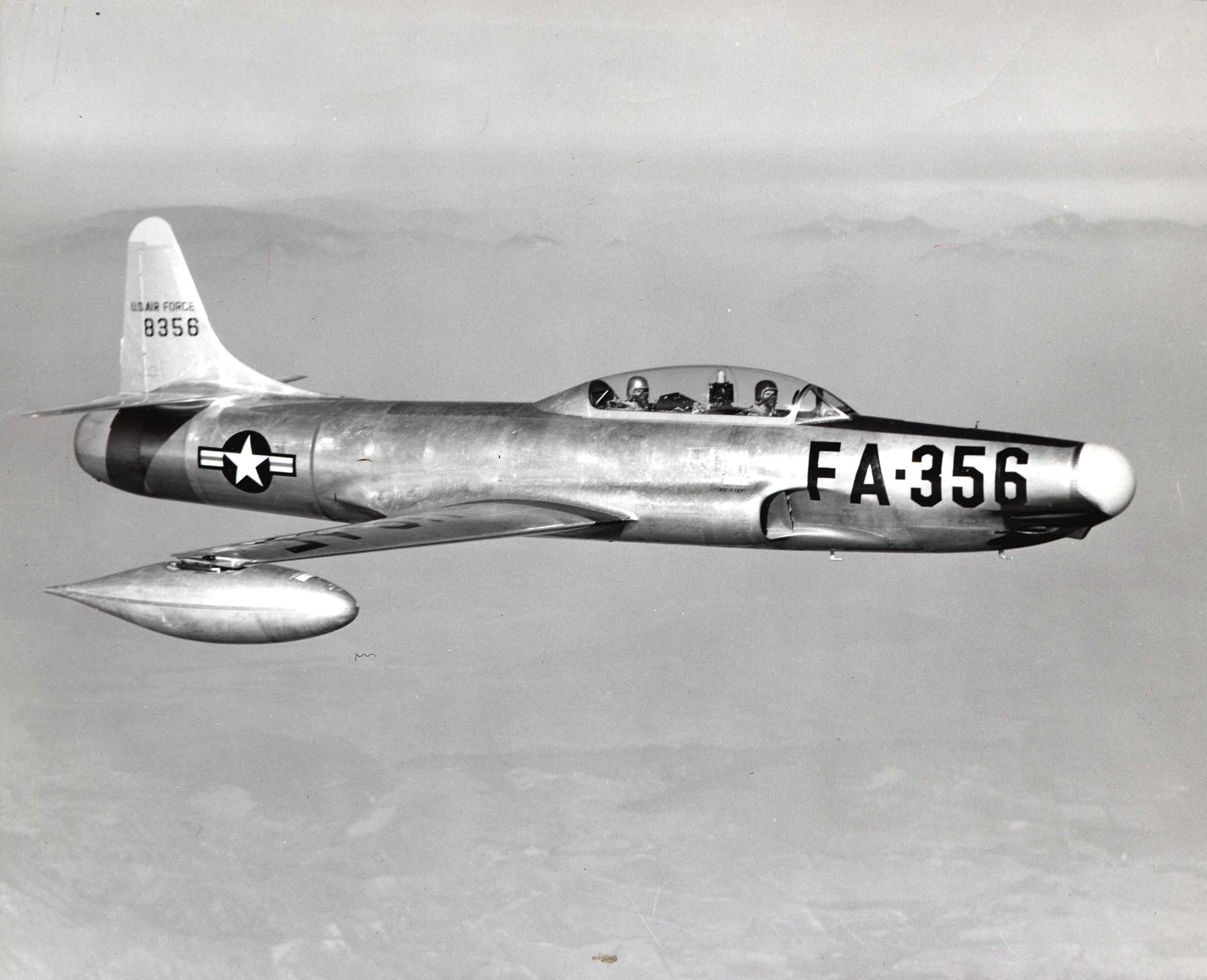
Two prototypes were built at Lockheed Plant B-9, located on the east side of Van Nuys Airport. Two TF-80C-1-LO (later redesignated T-33A) Shooting Star two-place trainers, 48-356 and 48-373, were modified with the installation of air intercept radar, an electronic fire control system, radar gun sight, four Browning AN-M3 .50-caliber (12.7 × 99 NATO) aircraft machine guns and a more powerful Allison J33-A-33 turbojet engine with water-alcohol injection and afterburner. The rear cockpit was equipped as a radar intercept officer’s station.
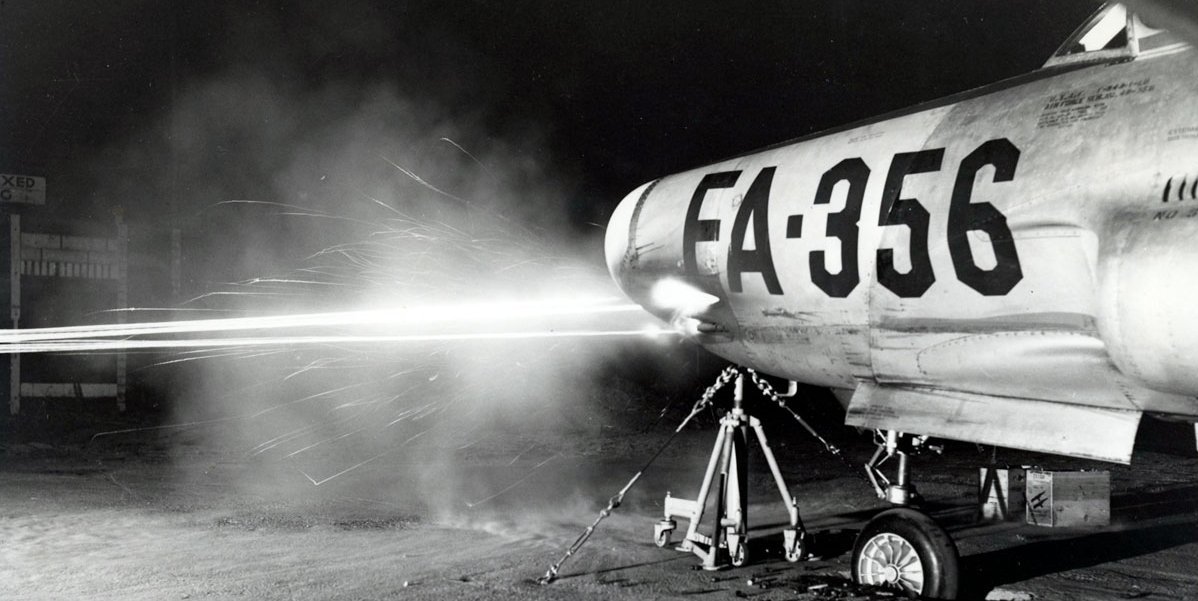
It was initially thought that the project would be a very simple, straightforward modification. However, the increased weight of guns and electronics required the installation of a more powerful engine than used in the T-33A. The new engine required that the aft fuselage be lengthened and deepened. Still, early models used approximately 80% of the parts for the F-80C fighter and T-33A trainer. The Air Force ordered the aircraft as the F-94A. Improvements resulted in an F-94B version, but the definitive model was the all-rocket-armed F-94C Starfire.
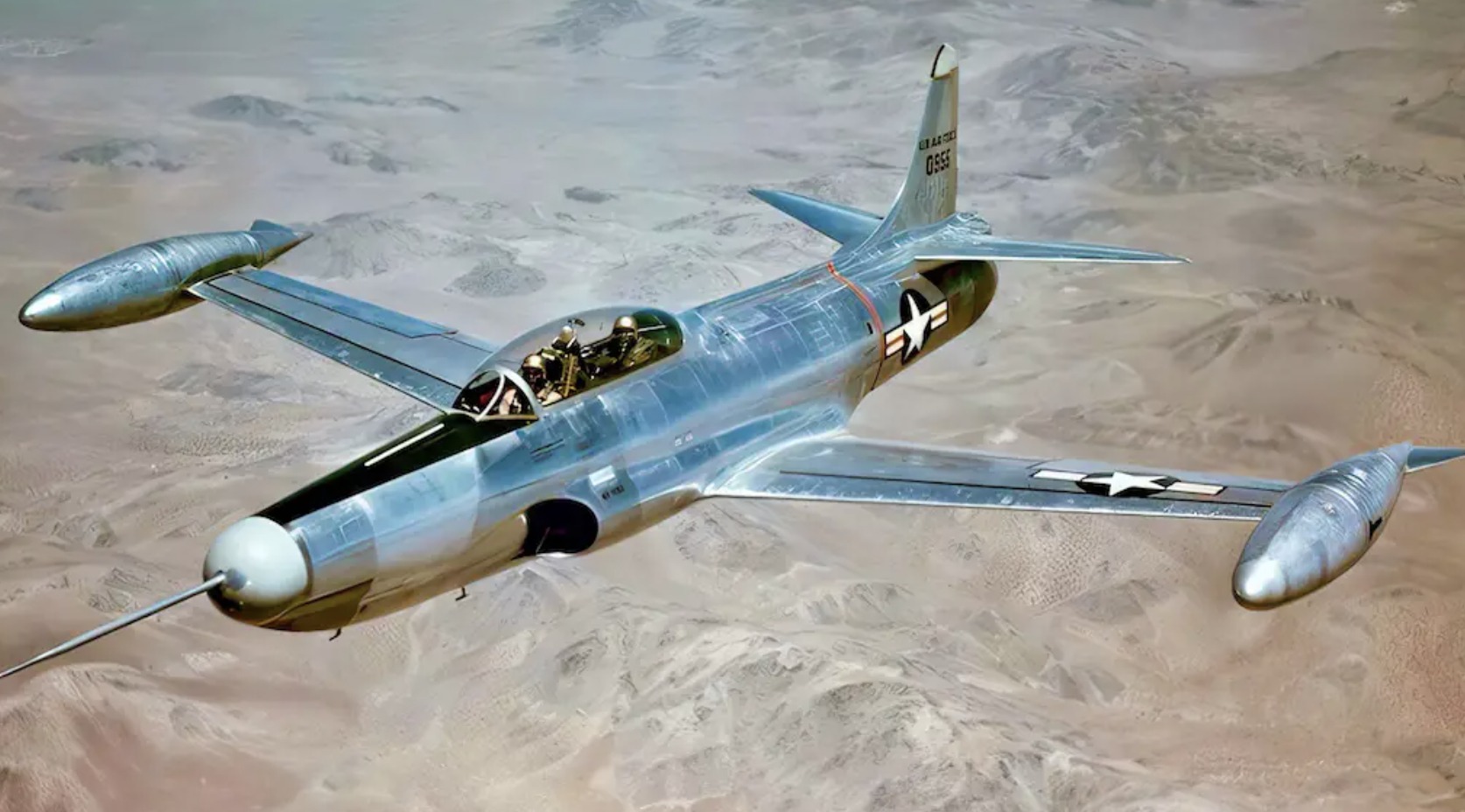
 The Allison J33-A-33 was a single-shaft turbojet engine with a single-stage centrifugal-flow compressor, 14 combustion chambers and, a single-stage axial flow turbine. The engine was rated at 4,600 pounds of thrust (20.46 kilonewtons) and 6,000 pounds (26.69 kilonewtons) with afterburner. The J33-A-33 was 17 feet, 11.0 inches (5.461 meters) long, 4 feet, 1.3 inches (1.252 meters) in diameter and weighed 2,390 pounds (1,084 kilograms).
The Allison J33-A-33 was a single-shaft turbojet engine with a single-stage centrifugal-flow compressor, 14 combustion chambers and, a single-stage axial flow turbine. The engine was rated at 4,600 pounds of thrust (20.46 kilonewtons) and 6,000 pounds (26.69 kilonewtons) with afterburner. The J33-A-33 was 17 feet, 11.0 inches (5.461 meters) long, 4 feet, 1.3 inches (1.252 meters) in diameter and weighed 2,390 pounds (1,084 kilograms).
Originally a P-80C Shooting Star single-place fighter, 48-356 had been modified at Lockheed Plant B-9 in Van Nuys to become the prototype TF-80C two-place jet trainer (the designation was soon changed to T-33A), which first flew 22 March 1948. It was then modified as the prototype YF-94. 48-356 was later modified as the prototype F-94B. It is in the collection of the Air Force Flight Test Museum, Edwards Air Force Base, and is in storage awaiting restoration.
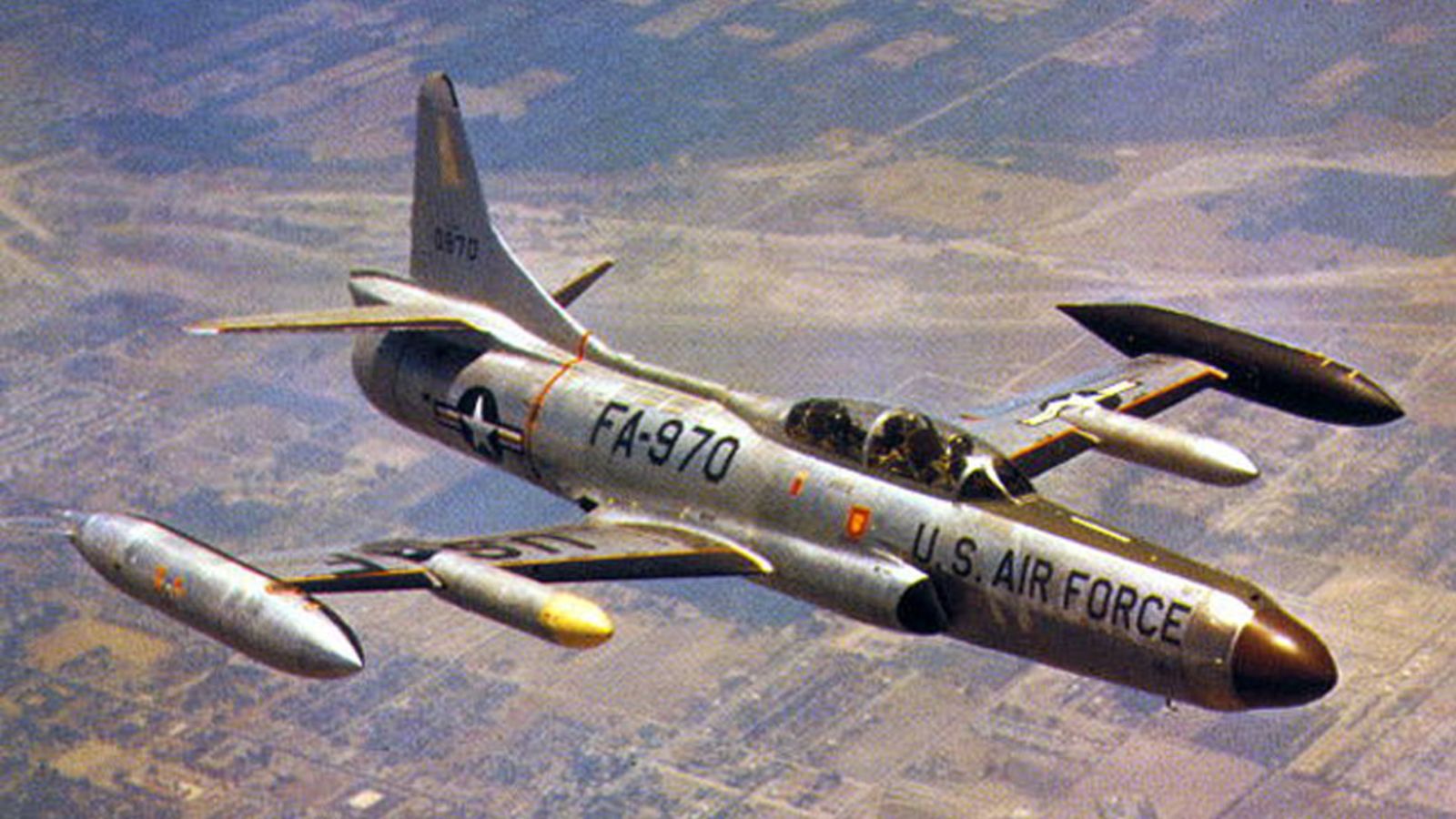
© 2019, Bryan R. Swopes
This aircraft (YF-94! 48-356) is no longer at Lackland. It is currently in storage at Edwards AFB, CA awaiting restoration for the Air Force Flight Test Museum
That’s great news! Thank very much for the updated information. I will correct the post. Thank you for bringing it to my attention, and thank you for visiting my blog. I saw the photo of you with the F-35. Great shot.